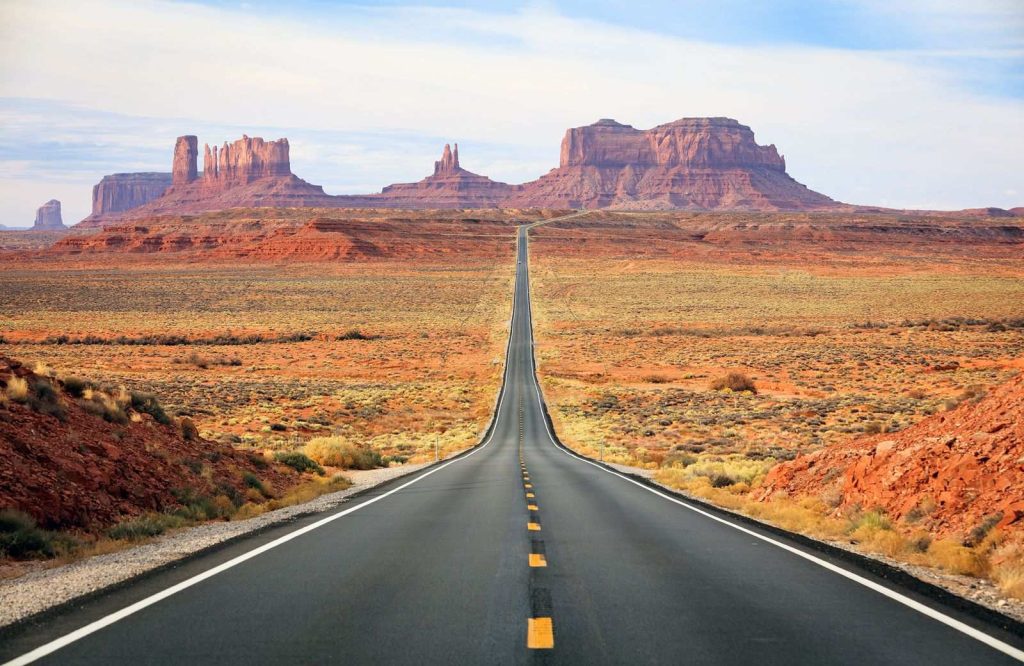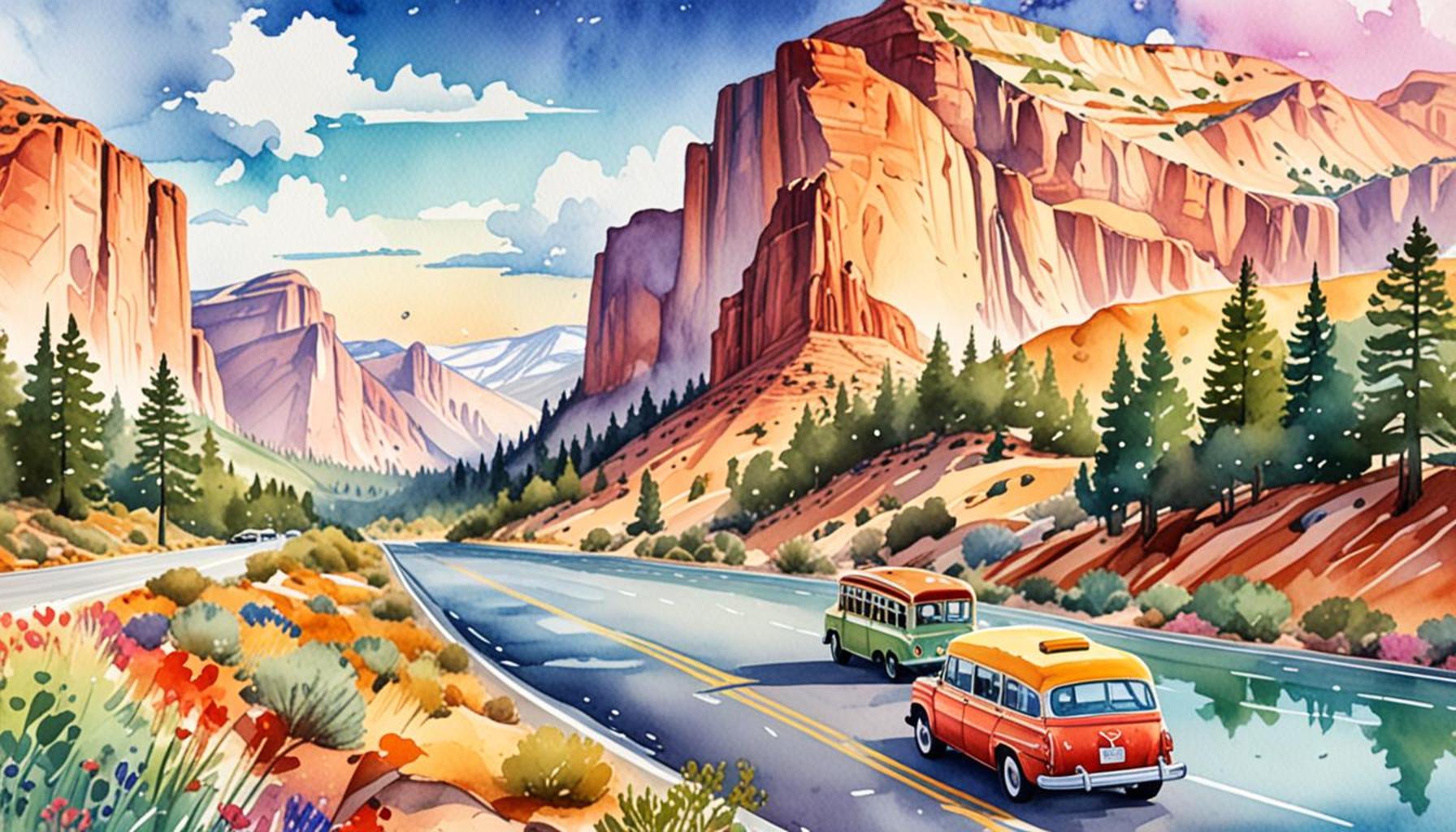Adventure Itineraries: Exploring the National Parks of the USA on Road Trips

Explore the National Parks of the USA
Road trips across America’s National Parks provide not only an escape from the hustle and bustle of everyday life but also a chance to connect deeply with some of the most awe-inspiring natural landscapes. Imagine traversing through the misty evergreen forests of Olympic National Park, replete with towering trees and moss-covered trails, or witnessing the dramatic shifting colors of sunset at Grand Canyon National Park, where the vast chasms of stone reveal nature’s artistry in vivid hues.
Why is a road trip an ideal way to experience these parks? Here are a few compelling reasons to consider:
- Flexibility: A road trip allows travelers the freedom to design their own itinerary. You can stop whenever inspiration strikes, from a sudden urge to photograph wildlife to an inviting trailhead urging you to explore further.
- Diverse Experiences: Each park contributes unique adventures. In Yellowstone National Park, you can be mesmerized by geysers, like the iconic Old Faithful, and wildlife such as bison and elk roaming freely. Meanwhile, the granite cliffs of Yosemite offer exhilarating rock climbing opportunities, or simply a serene place to picnic.
- Convenience: With many parks located within driving distances of one another, it’s possible to experience multiple ecosystems in one trip. For instance, after soaking in the majestic views at Glacier National Park, you can hop in your car and drive to Waterton Lakes National Park in Canada, further enriching your adventure.
For those planning such a journey, the prospect of selecting destinations might seem exciting yet daunting. Consider these must-visit parks:
- Yellowstone National Park: As the first national park in the world, Yellowstone is famed for its geothermal features, including the colorful Grand Prismatic Spring, as well as its extensive array of wildlife like grizzly bears, wolves, and trumpeter swans.
- Yosemite National Park: Known for iconic landmarks such as El Capitan and Half Dome, Yosemite is a haven for outdoor enthusiasts, offering an extensive network of trails that cater to every hiking skill level, each leading to stunning vistas and secluded waterfalls.
- Grand Canyon National Park: Characterized by its immense size and intricate landscape, the Grand Canyon presents numerous hiking trails, including the challenging Bright Angel Trail, which offers a direct route to the Colorado River, or the less strenuous Rim Trail, perfect for families wanting to enjoy the views.
This article aims to equip you with suggested itineraries designed to showcase the finest of what these natural wonders have to offer. As you prepare to embark on your journey, remember the beauty and adventure that lies ahead—so buckle up, tune in your favorite road trip playlist, and let your spirit of adventure guide you through the stunning landscapes of America’s protected treasures.
DISCOVER MORE: Click here to dive into vibrant festivals

Planning Your National Park Road Trip
Embarking on a road trip across America’s National Parks is not just a journey through stunning landscapes, but a chance to immerse yourself in diverse ecosystems and historic sites. To make the most of your adventure, careful planning is essential. Here are some key factors to consider as you outline your itinerary:
Choose Your Parks Wisely
With over 60 national parks across the United States, selecting the ones you want to visit can be overwhelming. To narrow down your choices, think about what you wish to experience. If you’re interested in geothermal wonders and wildlife, Yellowstone National Park should top your list. On the other hand, for breathtaking rock formations and scenic vistas, Grand Canyon National Park is a must-see. Each park holds its own unique treasures, so consider researching their offerings.
Ideal Duration of Your Trip
Determining how long you want to spend on the road is crucial. A weeklong trip might allow you to explore a few parks in a particular region, while a longer journey could warrant a cross-country adventure. For instance, if you’re planning to include parks like Yosemite, Sequoia, and Kings Canyon, allocating at least ten days will provide ample time to enjoy each destination without feeling rushed. Consider the time of year as well; spring and fall not only offer milder weather but also fewer crowds.
Scenic Routes and Stops
Scenic drives not only lead you to your destination but make the journey itself a thrilling part of the adventure. To maximize your experience, plan for various stops along the way that highlight regional attractions. For example, traveling from Yellowstone to Grand Teton National Park allows you to witness the beauty of the Teton Range while also exploring the surrounding lakes and trails. These enclosing adventures could also lead you to historic towns and local eateries that offer a taste of the regions you traverse.
Essential Packing List
When setting out for your national park road trip, it’s important to be well-prepared. Here’s a packing list that can enhance your adventure:
- Hiking Gear: Comfortable shoes, backpacks, and hydration systems are essential for outdoor activities.
- Camping Equipment: If planning to camp, include tents, sleeping bags, and cooking supplies.
- Navigation Tools: While smartphones are handy, consider bringing a physical map for areas with limited connectivity.
- Safety Supplies: A first aid kit, insect repellent, sunscreen, and plenty of snacks can keep you prepared for unexpected situations.
- Camera: Capture the breathtaking beauty of the landscapes and wildlife you’ll encounter along the way.
As you start to shape your perfect national park road trip itinerary, remember that every mile traveled is an invitation to explore and engage with the great outdoors. From the colossal canyons of the Southwest to the tranquil forests of the Pacific Northwest, adventure awaits around every bend in the road.
Discovering the Wonders of Nature
When embarking on an adventure itinerary through the National Parks of the USA, road trips offer an unmatched opportunity to connect with nature. From the breathtaking vistas in Yosemite Valley to the rugged landscapes of Yellowstone, each destination presents unique ecosystems and stunning geological formations. These national treasures are designed for exploration, allowing travelers to fully immerse themselves in a symphony of sights and sounds. Not only do these journeys enable scenic drives, but they also encourage flexibility. With the vastness of the American landscape at your fingertips, you are free to modify your plans and discover hidden gems along the way. Imagine stopping at a peaceful overlook to watch a sunset or taking an unexpected detour to hike a lesser-known trail—the possibilities are endless. Additionally, road trips often create a sense of camaraderie among fellow travelers who share the same passion for adventure. It is not uncommon to strike up conversations with like-minded explorers at campgrounds or while hiking. This connection can enhance your journey, providing stories and tips that enrich your experience. Whether traveling solo, with friends, or family, the spirit of adventure fosters strong bonds and unforgettable memories.Learn more about the national parks’ unique features, local wildlife, and rich histories in our comprehensive guides that will help you plan the perfect road trip adventure. Reach out to parks’ visitor centers for insights on the best seasons to visit and must-see attractions.
| Advantages | Details |
|---|---|
| Flexible Travel Plans | Road trips allow spontaneous changes to itineraries, promoting exploration and adventure. |
| Enhanced Connectivity | Interactions with fellow travelers and park staff can lead to shared experiences and valuable insights. |
DIVE DEEPER: Click here to uncover more about cultural experiences in sustainable tourism
Maximizing Your Experience in National Parks
Once you have organized your itinerary and packed your essentials, the next step is ensuring that you can fully immerse yourself in the beauty and excitement of America’s national parks. Here are some strategies to enhance your adventure:
Timing and Park Access
Pay attention to the timing of your visit. Most national parks experience peak seasons, often during the summer months when families are on vacation. This can lead to crowded trails and limited parking spaces. To avoid the rush, consider visiting during the shoulder seasons—late spring or early fall—when the weather remains pleasant, yet the park sees fewer visitors. Additionally, many parks offer extended hours for visitors, which may allow you to start your day earlier or extend it into twilight to catch magical sunrises or sunsets.
Engaging with Park Programs
Tap into the educational resources provided by the parks themselves. Many national parks host ranger-led programs that focus on nature walks, historical talks, and wildlife spotting. These programs can enrich your understanding of the park’s ecology and history, making your visit even more meaningful. For example, Grand Teton National Park offers guided hiking trails that lead to some of the park’s most stunning vistas while teaching visitors about local geology.
Wildlife Watching Tips
One of the most thrilling aspects of visiting national parks is encountering wildlife in their natural habitats. Each park has specific seasons when certain species are more visible. In Yellowstone, the best time to see bison and elk is during dawn or dusk. Meanwhile, if you’re hoping to catch sight of the majestic bald eagle in Acadia National Park, visit during the spring or fall migration periods. When observing wildlife, keeping a respectful distance is crucial—use binoculars or zoom lenses to admire them without disturbing their natural behaviors.
Leave No Trace Principles
As you embark on your adventure, it’s paramount to practice environmental stewardship to preserve the beauty of these natural wonders. The Leave No Trace principles provide guidelines for minimizing your impact on the environment. These include staying on marked trails, carrying out whatever you bring in (including trash), and respecting wildlife. Adopting these practices ensures that future generations can enjoy the same breathtaking scenery that you do.
Explore Beyond the Parks
Many national parks are located near charming towns or significant landmarks worth exploring. For example, after hiking in Zion National Park, a visit to the historic town of Springdale offers a perfect opportunity for dining and relaxing. In addition, venturing off the beaten path to nearby state parks can enrich your experience. Areas like Custer State Park in South Dakota offer additional wildlife encounters and breathtaking landscapes, such as the iconic Needles Highway, connecting with the nearby Badlands National Park for a complete westward exploration.
As you traverse the diverse park landscapes, from the granite cliffs of Yosemite to the lush forests of Great Smoky Mountains, each day of your road trip unveils new beauty and adventure. Take your time to explore, learn, and connect with the raw wonders of nature that define America’s national parks.
DIVE DEEPER: Click here to discover exciting culinary adventures</a
Conclusion
Embarking on a road trip through America’s national parks presents a unique opportunity to connect with nature while creating lifelong memories. From the rugged landscapes of Yellowstone to the serene vistas of Acadia, each park offers a distinctive experience that caters to adventure seekers, nature lovers, and history buffs alike. Planning your itinerary with thoughtful timing, engaging in park programs, and practicing Leave No Trace principles not only maximizes your experience but also ensures the conservation of these precious environments for future generations.
Moreover, embracing the surrounding areas—charming towns, hidden state parks, and striking landmarks—can enhance your adventure, providing a richer understanding of the local culture and biodiversity. The interactions with vibrant wildlife and the breathtaking beauty of natural landscapes serve as a reminder of our connection to the earth. As you journey through these national treasures, take the time to reflect on the significance of these places and the stories they hold.
In essence, a road trip to the national parks is more than just a getaway; it is an invitation to explore, discover, and cherish the incredible diversity that the USA offers. So pack your bags, hit the road, and embark on an adventure that promises exploration, inspiration, and a profound appreciation for the great outdoors.


